 Joan Saslow is the author of numerous widely used multi-level courses for teens, young adults, and adults. She has taught English and foreign languages at all levels of instruction in both South America and USA. Allen Ascher has been an English teacher, trainer, intensive English language program director, and consultant. He has also been a publisher, developing ELT materials for students of all ages. Ms. Saslow and Mr. Ascher have co-authored materials together since 2002. In this article, they share their tips for teaching grammar to teenage EFL learners.
Joan Saslow is the author of numerous widely used multi-level courses for teens, young adults, and adults. She has taught English and foreign languages at all levels of instruction in both South America and USA. Allen Ascher has been an English teacher, trainer, intensive English language program director, and consultant. He has also been a publisher, developing ELT materials for students of all ages. Ms. Saslow and Mr. Ascher have co-authored materials together since 2002. In this article, they share their tips for teaching grammar to teenage EFL learners.
This series of short articles will address the three-part reality we face: the social nature of the teenaged learner, the challenges of learning English outside of an English-speaking environment, and the limited number of class hours devoted to English study per week. Each article will focus on one aspect of language teaching and learning and examine pedagogical approaches to maximize learning and success.
See our previous article on teaching vocabulary to teenage EFL learners.
Grammar
There’s no escaping the importance of grammar. It has to be taught. It has to be learned. But, as with all language learning, motivation is key, and for the teenager grammar is not the most motivating part of English study. Let’s examine some ways to keep teen learners interested and focused long enough to master the essential grammar points.
A purposeful methodology
1. Show grammar in its social use
Since teens’ social life is paramount, connecting grammar to its social use makes grammar feel useful and valuable to them. The following natural interaction on social media foreshadows the use learners will make of the present continuous, by the end of this textbook unit.
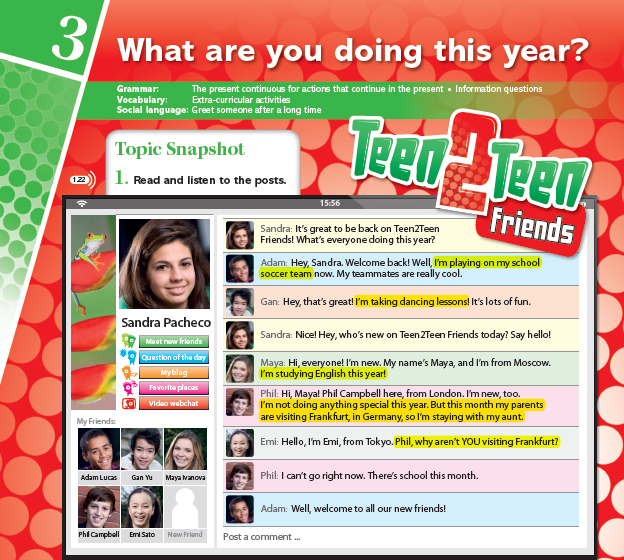
2. Clearly illustrate form, meaning, and use of grammar
If we illustrate grammar in actual use, students see its value, increasing their motivation to learn it. Explaining grammar rules simply and explicitly is helpful for teens too. Clear examples with color highlighting and boldface type ensure that learners focus their attention on the point of the presentation.
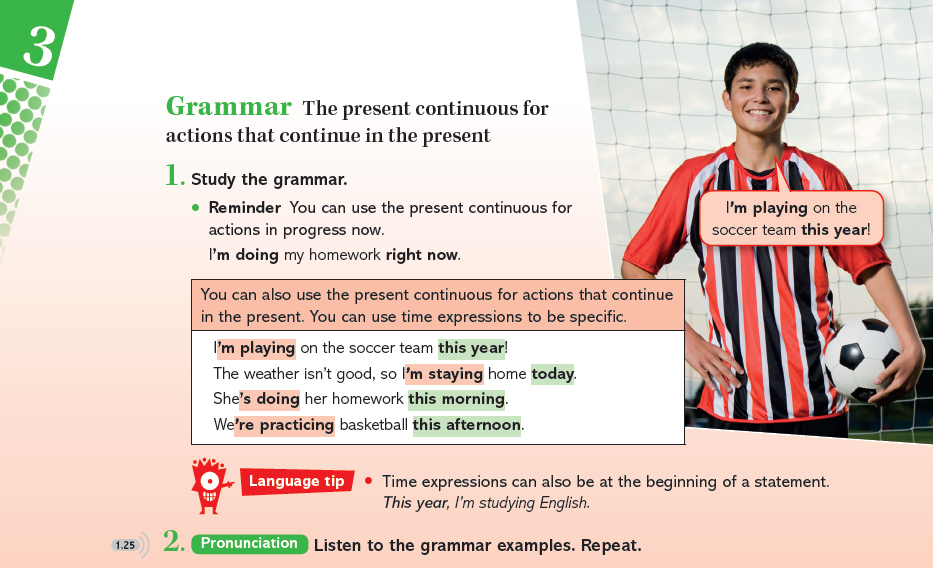
3. Include pronunciation practice
Grammar charts in textbooks present grammar forms for students to read and study. Though such charts are necessary, students don’t have many opportunities to hear and practice grammar outside of class. Two important benefits of listening to and repeating grammar examples are:
- Repetition increases the memorability of the grammar because it involves two more skills: listening and speaking.
- Paying attention to the sound, rhythm, and stress of the grammar leads to clear, comprehensible pronunciation.

4. Vary practice exercises
Increasing the variety of grammar exercises in a lesson boosts the speed and depth of learning. Adding listening comprehension to the mix of grammar exercises broadens the contexts in which the grammar is used, making it more memorable.
Exercises that provide learners with an opportunity to use the grammar to talk about themselves are particularly motivating to teens. Here are three varied grammar exercises for practicing the present continuous: a traditional completion exercise; a listening comprehension exercise; and a freer and more productive exercise.
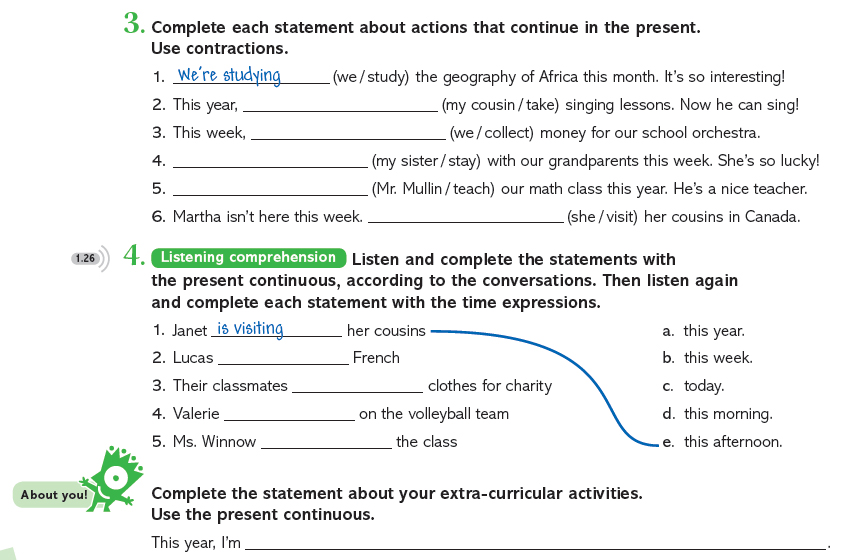
5. Continually integrate and recycle the grammar
Integrating and recycling grammar into teen-relevant reading texts further extends exposure to and reinforces newly learned grammar. In the following example, the present continuous is richly integrated. It’s also contrasted with previously taught structures such as the verb be and can for ability.
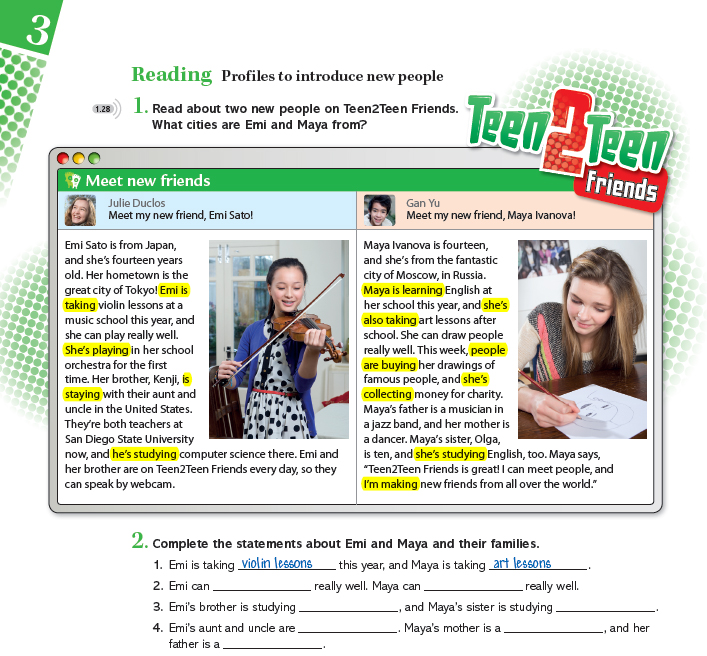
6. Provide social practice of the grammar
Natural, informal social language has compelling appeal to teenagers. Model conversations that integrate the grammar with this type of language motivate teens to practice. In the following conversation, students practice the social use of the present continuous in a conversation they might really have.
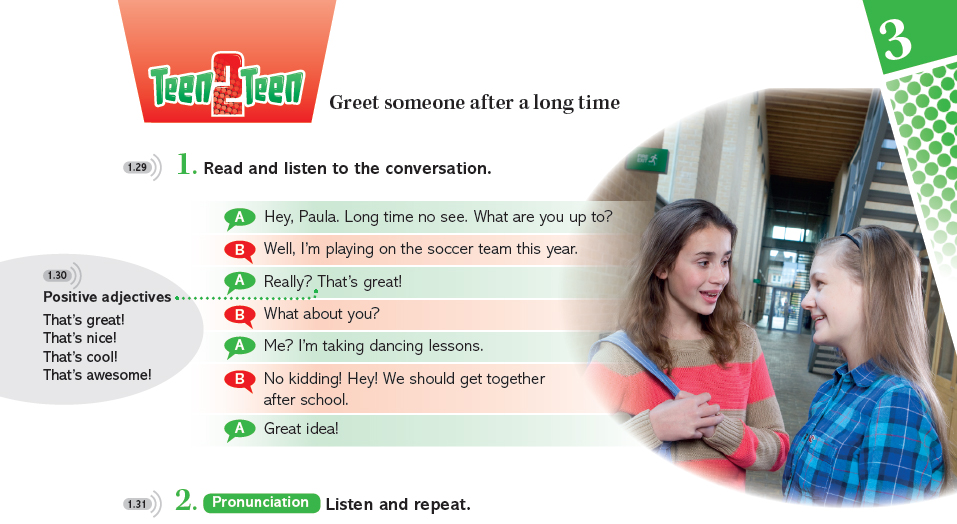
7. Personalize the grammar
But it’s important not to stop with mere practice of model conversations from a book. Guided conversation practice offers learners an essential opportunity to use the new grammar in their own social conversations, bridging the gap between controlled practice and productive use. Notepads and visual cues increase each student’s involvement, motivation, and success.
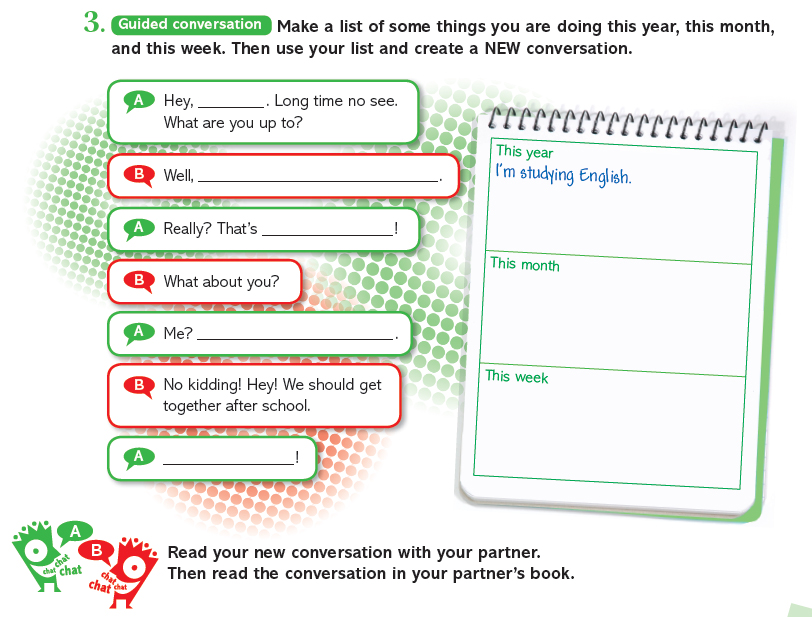
Summary
In the reality of the EFL setting, with very few class hours, teen learners need many opportunities to observe and practice new grammar. And because they are teens, integrating the grammar in relevant social conversations ensures motivation, memorability, and mastery of new grammar.
Text and illustration examples in this article are from Teen2Teen Two by Joan Saslow and Allen Ascher.
For more expert advice on teaching teenagers from Joan Saslow and Allen Ascher, don’t forget to visit the OUP ELT global blog regularly.
To communicate with the authors directly, you can also take part in their interactive webinars:
Teaching vocabulary to teens in the foreign language setting
Friday, October 11, 2013: 2pm-3pm or 6pm-7pm BST. Watch a recording here.
Teaching grammar to teens in the foreign language setting
Thursday, November 7, 2013: 2pm – 3pm or 6pm-7pm BST. Watch a recording here.
Text and illustration examples in this article are from Teen2Teen Two, a Secondary course for teens, by Joan Saslow and Allen Ascher.
Related articles
- Teaching teens in the EFL setting: Vocabulary (oupeltglobalblog.com)


[…] Joan Saslow is the author of numerous widely used multi-level courses for teens, young adults, and adults. She has taught English and foreign languages at all levels of instruction in both South Am… […]
[…] Teaching teens in the EFL setting: Grammar […]